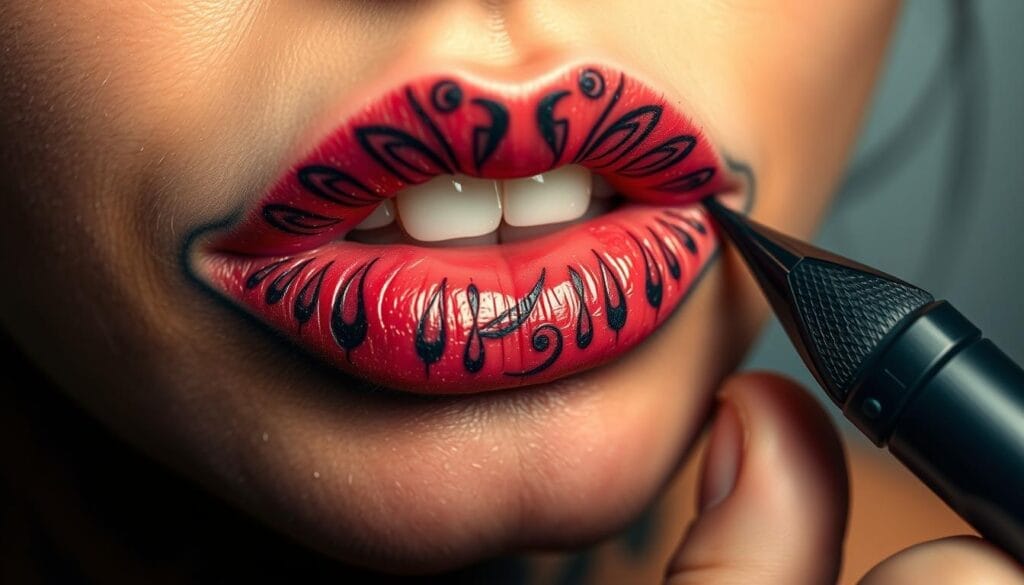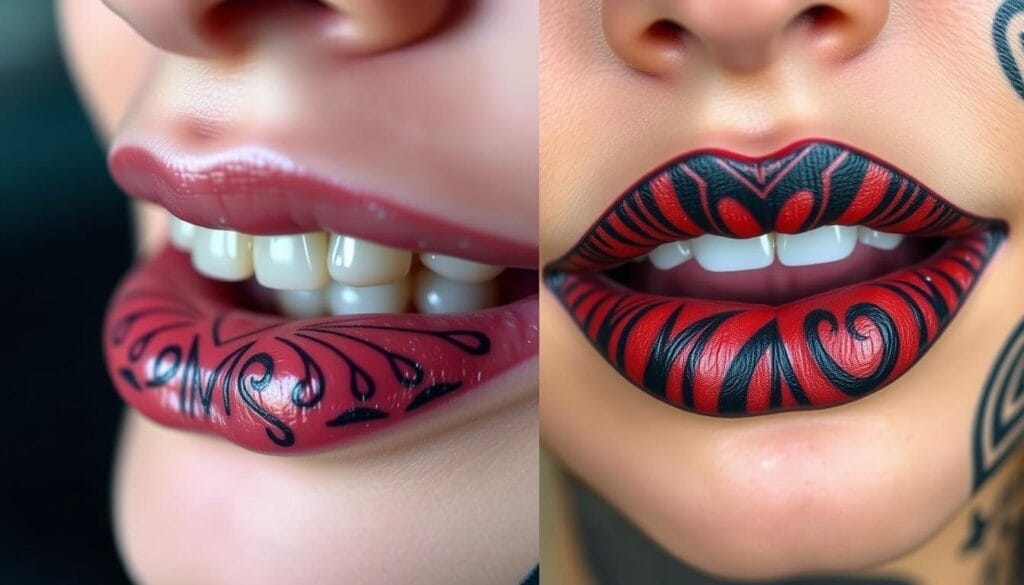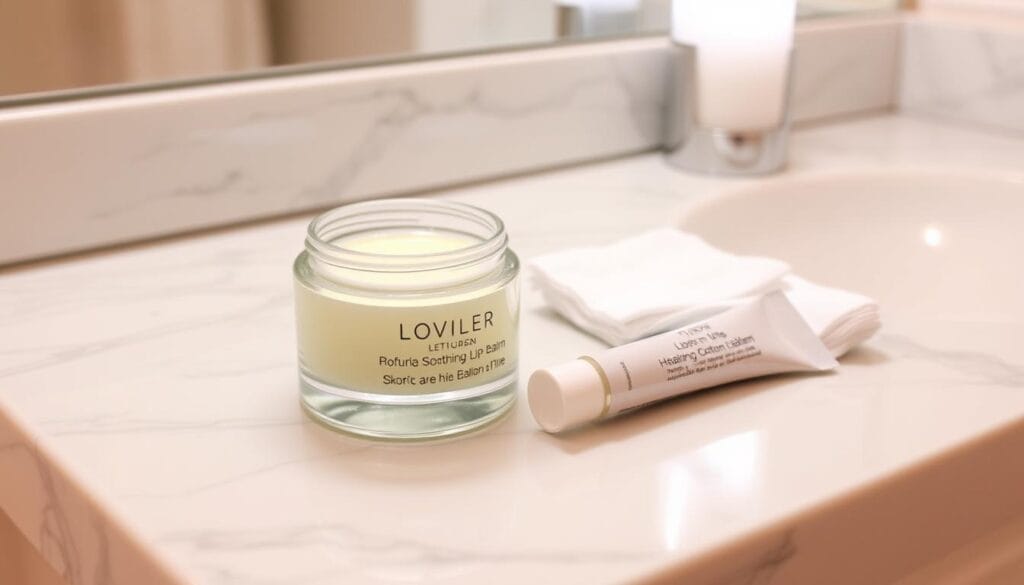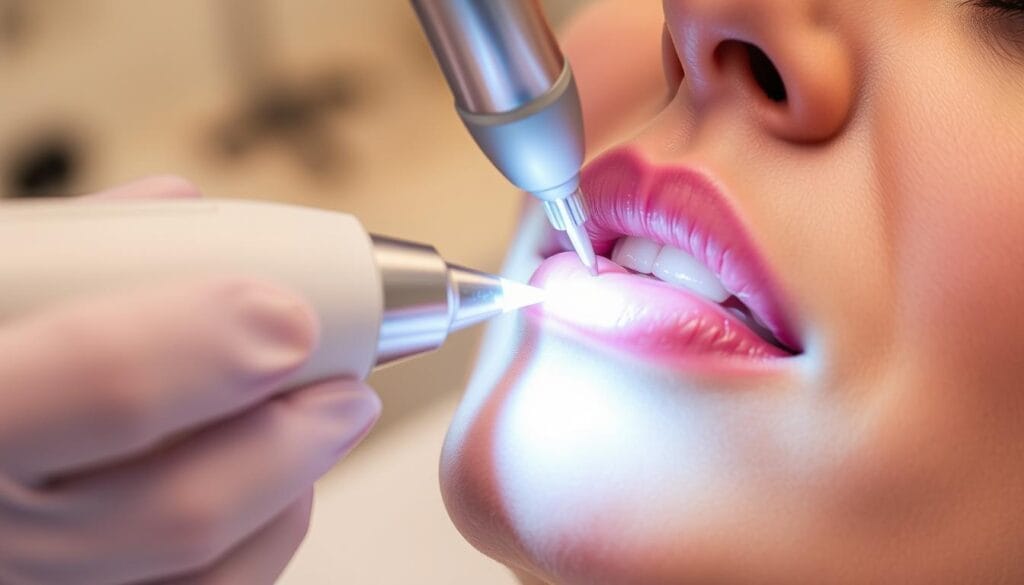Uncategorized
Do Lip Tattoos Hurt? Pain Levels and Expert Tips
Table of Contents
Considering a lip tattoo but concerned about the pain? You’re not alone. The prospect of getting inked on such a sensitive area can be daunting. However, understanding what to expect can help alleviate your worries and prepare you for a successful and comfortable experience. In this comprehensive guide, we’ll explore the pain associated with lip tattoos, factors that influence the discomfort, and provide insights into the overall tattoo process.
Key Takeaways
- Lip tattoos can be more painful than tattoos on other body parts due to the high concentration of nerve endings in the lips.
- Factors like the artist’s technique, the size and placement of the tattoo, and your pain tolerance can affect the level of discomfort.
- Proper aftercare is crucial to minimize pain and ensure a smooth healing process.
- Consulting an experienced and reputable tattoo artist can help you manage the pain and achieve the desired results.
- Understanding the potential risks and being prepared for the healing process can help you make an informed decision about getting a lip tattoo.
Exploring the World of Lip Tattoos
Lip tattoos have emerged as a unique form of body art, captivating individuals seeking to express their personal style in a bold and permanent way. These intricate designs, etched onto the delicate skin of the lips, have gained widespread popularity in recent years, offering a canvas for creativity and self-expression.
What Are Lip Tattoos?
Lip tattoos are a specialized type of body modification that involve the placement of permanent ink on the lips, either on the inner or outer lip area. These tattoos can range from simple text or symbols to intricate patterns and designs, all carefully crafted by skilled tattoo artists.
The Rise of Lip Tattoo Popularity
The growing interest in lip tattoos can be attributed to several factors. Lip tattoos offer a distinct and eye-catching form of self-expression, allowing individuals to showcase their personality and style in a unique way. Additionally, the accessibility and visibility of lip tattoos have contributed to their rising popularity, as they can be easily displayed and shared on social media platforms.
Furthermore, the versatility of lip tattoos has also played a role in their increasing popularity. Inner lip tattoos and outer lip tattoos provide different canvases for artists to work with, enabling a wide range of creative possibilities and personal customization.
| Lip Tattoo Popularity | 2018 | 2019 | 2020 | 2021 |
|---|---|---|---|---|
| Searches for “lip tattoo” | 120,000 | 150,000 | 180,000 | 220,000 |
| Searches for “inner lip tattoo” | 50,000 | 60,000 | 70,000 | 80,000 |
| Searches for “outer lip tattoo” | 30,000 | 40,000 | 50,000 | 60,000 |
As the lip tattoo trend continues to evolve, individuals are increasingly drawn to the unique and personal nature of this form of body art, making it a captivating and growing segment of the tattoo industry.
The Anatomy of Lip Tattoo Pain
The lips are a highly sensitive area of the body, which can contribute to the level of lip tattoo pain experienced during the procedure. This sensitivity is due to the unique anatomy of the lips, including their thin skin, abundant blood supply, and dense nerve endings.
Factors Influencing Pain Levels
Several factors can influence the pain levels associated with getting a lip tattoo. These include:
- Skin Thickness: The skin on the lips is generally thinner than other areas of the body, which can make the tattooing process more sensitive and painful.
- Blood Supply: The lips have a rich blood supply, which can cause increased bleeding and inflammation during the tattoo process, leading to heightened lip tattoo pain.
- Nerve Endings: The lips are densely populated with nerve endings, making them a particularly sensitive area to tattoo. This can result in a more intense and unpleasant sensation during the procedure.
- Individual Pain Tolerance: Each person’s pain tolerance can vary, and some individuals may experience more lip tattoo pain than others, even with the same anatomical factors.
| Factor | Description | Impact on Lip Tattoo Pain |
|---|---|---|
| Skin Thickness | The lips have thinner skin compared to other areas of the body. | Increased sensitivity and pain during the tattooing process. |
| Blood Supply | The lips have a rich blood supply, leading to increased bleeding and inflammation. | Heightened lip tattoo pain and discomfort. |
| Nerve Endings | The lips are densely populated with nerve endings, making them a sensitive area. | More intense and unpleasant sensations during the tattoo procedure. |
| Individual Pain Tolerance | Each person’s ability to withstand pain can vary significantly. | Some individuals may experience more lip tattoo pain than others. |
Understanding the unique anatomy of the lips and the factors that can influence the level of lip tattoo pain can help individuals prepare for and potentially manage the discomfort associated with the procedure.

Do Lip Tattoos Hurt?
One of the primary concerns for those considering a lip tattoo is the level of pain they can expect to experience. The truth is, lip tattoos can be quite painful, but the level of discomfort can vary depending on several factors.
According to tattoo artists, the lips are considered one of the more sensitive areas of the body to get tattooed. The delicate and thin skin of the lips, combined with the high concentration of nerve endings, makes the process quite uncomfortable for many people.
To better understand the pain associated with lip tattoos, let’s explore the key factors that influence the level of discomfort:
- Location on the lip: The inner lip, closer to the gums, is generally more sensitive than the outer lip.
- Individual pain tolerance: Some people have a higher pain threshold than others, which can affect their overall experience.
- Size and complexity of the tattoo design: Larger and more intricate tattoos tend to be more painful than smaller, simpler ones.
- Skill and technique of the tattoo artist: An experienced artist who can work quickly and efficiently can help minimize the discomfort.
While the pain of a lip tattoo may be intense, many people find the results worth the temporary discomfort. With the proper preparation, numbing techniques, and aftercare, the pain can be managed and the end result can be a beautiful and unique form of self-expression.
| Factors Affecting Lip Tattoo Pain | Level of Discomfort |
|---|---|
| Location on the lip | Inner lip is more sensitive than outer lip |
| Individual pain tolerance | Varies from person to person |
| Size and complexity of the tattoo design | Larger and more intricate tattoos are more painful |
| Skill and technique of the tattoo artist | Experienced artists can minimize discomfort |
“The lips are one of the most sensitive areas to get tattooed, but the end result is often worth the temporary discomfort for many people.”
Lip Tattoo Pain: Inner vs. Outer Lip
When it comes to lip tattoos, the location can significantly impact the level of pain experienced. Tattoos on the inner and outer lips have distinct characteristics that contribute to varying levels of discomfort. Understanding the differences between these two areas can help you better prepare for your next lip tattoo adventure.
The Inner Lip Tattoo Experience
The inner lip, also known as the mucous membrane, is a highly sensitive area. Tattoos in this region tend to be more painful due to the abundance of nerve endings and thin skin. The delicate nature of the inner lip makes the process more intense, with many describing the sensation as a “burning” or “stinging” feeling.
The Outer Lip Tattoo Advantage
In contrast, tattoos on the outer lip are generally considered less painful. The thicker skin and fewer nerve endings in this area make the experience more manageable for most people. While still not a completely painless process, the outer lip tattoo is often described as a more “tolerable” option compared to the inner lip.
| Characteristic | Inner Lip Tattoo | Outer Lip Tattoo |
|---|---|---|
| Sensitivity | Highly sensitive | Less sensitive |
| Skin Thickness | Thin | Thicker |
| Nerve Endings | Abundant | Fewer |
| Pain Level | More painful | Less painful |
Ultimately, the decision between an inner or outer lip tattoo should be based on your personal pain tolerance and the desired placement of the tattoo. Consulting with an experienced tattoo artist can also help you make an informed choice and manage your expectations for the lip tattoo pain experience.

The Lip Tattoo Process
Understanding the step-by-step lip tattoo process can help alleviate any anxiety or uncertainty about getting a lip tattoo. This section will provide a detailed guide on what to expect during a lip tattoo session, from the initial consultation to the aftercare instructions.
Step-by-Step Guide
Getting a lip tattoo is a unique experience that requires careful planning and execution. Here’s a step-by-step guide to the lip tattoo procedure:
- Initial Consultation: During the initial consultation, your tattoo artist will discuss your desired design, placement, and any concerns you may have. They will also assess the condition of your lips and provide recommendations on the best approach.
- Design and Stencil: The tattoo artist will work with you to create a custom design or use a pre-existing stencil that you both agree on. This stencil will be used as a guide during the tattooing process.
- Numbing the Area: To help minimize discomfort, your tattoo artist may apply a numbing cream or gel to your lips prior to the tattooing process.
- Tattooing: The actual lip tattoo process involves the artist carefully applying the ink to your lips using a specialized tattoo machine. This can be a sensitive area, so be prepared for some discomfort.
- Aftercare Instructions: Your tattoo artist will provide detailed instructions on how to care for your new lip tattoo during the healing process, which is crucial for ensuring proper healing and longevity of the tattoo.
Remember, the lip tattoo process may vary slightly depending on the individual artist and your specific needs. It’s essential to communicate openly with your tattoo artist and follow their guidance throughout the entire process.
“The lip tattoo process is a delicate and intricate procedure that requires skill, precision, and a gentle touch. It’s essential to find an experienced and reputable tattoo artist who can guide you through the process and ensure the best possible outcome.”
Aftercare for Lip Tattoos
Proper lip tattoo aftercare is essential for ensuring the longevity and proper healing of your new body art. Regardless of whether you’ve opted for a subtle lip blush or a bold lip tattoo design, taking the right steps to care for your tattoo can make all the difference in the world. Let’s explore the key elements of lip tattoo healing and the best practices to follow.
Cleaning and Moisturizing
To keep your lip tattoo clean and prevent infection, gently cleanse the area with a mild, fragrance-free soap and lukewarm water. Avoid scrubbing or using harsh chemicals, as this can damage the delicate skin. After cleaning, be sure to pat the area dry and apply a thin layer of unscented, hypoallergenic moisturizer to keep the skin hydrated.
Protecting the Tattoo
- Avoid touching or picking at the tattoo, as this can disrupt the healing process.
- Steer clear of excessive sun exposure, as UV rays can fade the ink and cause irritation.
- Refrain from using lipstick, lip gloss, or other cosmetic products on the tattooed area until it has fully healed.
Monitoring for Complications
During the healing process, keep an eye out for any signs of infection, such as redness, swelling, or oozing. If you experience any of these issues, consult your tattoo artist or a healthcare professional immediately. Proper lip tattoo aftercare can help ensure a smooth and successful healing journey.
| Aftercare Step | Recommended Approach |
|---|---|
| Cleaning | Gently cleanse with mild, fragrance-free soap and lukewarm water |
| Moisturizing | Apply a thin layer of unscented, hypoallergenic moisturizer |
| Sun Protection | Avoid excessive sun exposure to prevent fading and irritation |
| Avoiding Irritants | Refrain from using lipstick, lip gloss, or other cosmetic products until fully healed |
| Monitoring for Complications | Watch for signs of infection, such as redness, swelling, or oozing, and seek professional help if needed |

By following these essential lip tattoo aftercare guidelines, you’ll be well on your way to a successful and long-lasting lip tattoo. Remember, patience and diligence are key during the lip tattoo healing process.
Risks and Potential Complications
While lip tattoos can be a unique and stylish form of personal expression, they do come with a few potential risks and complications that individuals should be aware of. From infections to allergic reactions, understanding these issues and taking the necessary precautions is crucial for a safe and successful lip tattoo experience.
Preventing Infections and Other Issues
One of the primary concerns with lip tattoos is the risk of infection. The sensitive skin on the lips, combined with the invasive nature of the tattooing process, can create an environment ripe for bacterial growth if proper aftercare is not followed. Lip tattoo infections can range from mild irritation to serious medical conditions, so it’s essential to heed the artist’s instructions and maintain excellent hygiene during the healing process.
In addition to infections, lip tattoo risks may also include allergic reactions to the tattoo ink, swelling, scarring, and even nerve damage. Certain individuals may be more prone to these complications due to their skin type, immune system, or sensitivity to particular tattoo pigments. Consulting with a qualified and experienced lip tattoo artist can help mitigate these lip tattoo complications and ensure the best possible outcome.
| Potential Lip Tattoo Risks | Likelihood | Severity |
|---|---|---|
| Infection | Medium | High |
| Allergic Reaction | Low | Medium |
| Swelling | High | Low |
| Scarring | Low | Medium |
| Nerve Damage | Low | High |
By understanding the potential risks and taking the necessary precautions, individuals can enjoy the beauty and uniqueness of lip tattoos while minimizing the likelihood of experiencing any complications.
Healing Time for Lip Tattoos
The healing process for a lip tattoo can vary depending on several factors, but understanding the typical timeline can help you prepare for a smooth recovery. In general, you can expect your lip tattoo to take around 2-4 weeks to fully heal.
The initial healing phase is the most critical, as this is when the tattoo is most vulnerable and susceptible to complications. During the first 7-10 days, you may experience:
- Swelling and redness around the tattooed area
- Mild discomfort or tenderness
- Peeling or flaking of the skin
- Scabbing or crusting
It’s important to follow your artist’s aftercare instructions closely during this time to ensure proper healing and prevent infection.
After the initial healing phase, the lip tattoo will continue to fade and settle over the next 2-4 weeks. During this time, you may notice the following:
- The tattoo will appear slightly faded or lighter in color
- The edges may become a bit blurred or softened
- The tattoo will feel less raised or bumpy on the skin
By the end of the fourth week, your lip tattoo should be fully healed and the color should have stabilized. However, it’s important to note that healing times may vary based on factors such as your individual skin type, the location of the tattoo, and the complexity of the design.
| Healing Stage | Timeline | Typical Symptoms |
|---|---|---|
| Initial Healing | 7-10 days | Swelling, redness, peeling, scabbing |
| Continued Healing | 2-4 weeks | Fading, softening of edges, less raised |
| Full Healing | 4 weeks | Stable color and appearance |
Remember, lip tattoo healing time can vary, so it’s essential to follow your artist’s guidance and monitor your progress closely. With proper care and patience, your new lip tattoo will be healed and looking its best in no time.

Lip Tattoo Experiences: Real-Life Stories
When it comes to lip tattoos, hearing firsthand accounts from those who have undergone the process can provide invaluable insights. From the initial excitement to the real-life pain levels and aftercare routines, these lip tattoo experiences offer a candid glimpse into the world of this unique body art.
Sarah, a 27-year-old marketing executive, shared her lip tattoo story, “I was a bit nervous about the pain, but the overall experience was much better than I expected. The tattoo artist was very skilled, and the actual procedure went smoothly. The healing process was a bit challenging, but following the aftercare instructions closely helped me get through it.”
“The healing process was a bit challenging, but following the aftercare instructions closely helped me get through it.”
On the other hand, 32-year-old artist Emily had a slightly different take on her lip tattoo experience. “The pain was definitely more intense than I anticipated. I was surprised by how sensitive the area was, but the end result was worth it. The tattoo has become a unique part of my personal style.”
- Hear from individuals who have undergone the lip tattoo experience and gain valuable insights
- Discover the real-life pain levels and aftercare routines shared in these lip tattoo stories
- Understand the range of experiences, from smooth procedures to unexpected challenges
By exploring these lip tattoo experiences, you can better understand the realities of this popular body art and set realistic expectations for your own journey, should you choose to explore the world of lip tattoos.
Top Lip Tattoo Artists and Their Work
When it comes to the world of lip tattoo artists, there are a select few who have truly mastered the art. These professionals not only possess exceptional technical skills but also a keen eye for lip tattoo designs that captivate and inspire. Let’s explore the work of some of the top lip tattoo artists and discover what sets them apart.
One artist who has garnered significant attention in the industry is Ava Roth, known for her intricate and delicate line work. Her lip tattoo designs often feature intricate floral motifs and whimsical patterns that seamlessly complement the natural contours of the lips. Clients rave about Ava’s ability to create customized pieces that are both visually stunning and deeply personal.
Another renowned lip tattoo artist is Liam Mckenna, who has built a reputation for his bold and striking designs. From minimalist typography to vibrant abstract compositions, Liam’s work showcases his versatility and ability to push the boundaries of traditional lip tattooing. His lip tattoo designs are often sought after by those seeking a bold and statement-making look.
Lastly, we cannot overlook the talented Sophia Nguyen, whose delicate and ethereal lip tattoo designs have captivated the industry. Sophia’s expertise lies in creating designs that seamlessly blend with the natural features of the lips, resulting in a subtle yet impactful transformation. Her clients often praise her attention to detail and the way she tailors each piece to their individual preferences.
“The best lip tattoo artists are not just skilled technicians, but true artists who can transform the lips into a canvas for their unique visions.” – Tattoo Enthusiast Magazine
These are just a few of the exceptional lip tattoo artists making waves in the industry. Each of them brings a distinct style and approach to the art, ensuring that clients can find the perfect fit for their desired lip tattoo designs.

Lip Tattoo Maintenance and Touch-Ups
Maintaining the vibrant appearance of a lip tattoo requires diligent care and occasional touch-ups. As lip tattoos are exposed to the elements and daily wear and tear, they may gradually fade or blur over time. Proactive maintenance is essential to keep your lip tattoo looking its best.
To ensure your lip tattoo stays vibrant, follow these essential tips:
- Protect your tattoo from sun exposure. Wear a high-quality, SPF-infused lip balm or gloss to shield your tattoo from harmful UV rays, which can cause fading.
- Avoid excessive licking or biting of the tattooed area. This can accelerate fading and cause the tattoo to blur or distort.
- Gently exfoliate the lips regularly. Using a soft-bristled toothbrush or a gentle lip scrub can help remove dead skin cells and keep the tattoo looking sharp.
- Moisturize your lips consistently. Keeping the skin supple and hydrated will help maintain the clarity of the tattoo.
Over time, even with diligent care, lip tattoos may require touch-ups to restore their original vibrancy. A professional tattoo artist can assess the condition of your tattoo and determine the best approach to revitalize it, whether it’s a minor color boost or a more comprehensive refresh.
| Lip Tattoo Maintenance | Lip Tattoo Touch-Ups |
|---|---|
|
|
By following these lip tattoo maintenance and touch-up guidelines, you can keep your lip tattoo looking its best for years to come.
“Maintaining the vibrancy of a lip tattoo requires a combination of diligent care and occasional touch-ups from a professional artist.”
Lip Tattoo Removal: Options and Considerations
While lip tattoos are often intended to be permanent, there may be instances where individuals wish to remove or fade their tattoos. Fortunately, there are several options available for lip tattoo removal, each with its own set of considerations.
Laser Tattoo Removal
One of the most common methods for lip tattoo removal is laser treatment. Laser therapy uses targeted pulses of light to break down the tattoo ink pigments, allowing the body to naturally absorb and eliminate them. This process can be effective, but it may require multiple sessions, and the cost can be relatively high.
Chemical Peel Treatments
Chemical peels are another option for fading or removing lip tattoos. These treatments use acids or other chemicals to exfoliate the top layers of the skin, potentially lightening the tattoo over time. While less expensive than laser removal, chemical peels can be more irritating and may not be as effective for more vibrant or stubborn tattoos.
Surgical Excision
In some cases, surgical excision may be necessary to remove a lip tattoo. This involves the doctor surgically cutting out the tattooed area of the lip, which can be a more invasive and costly procedure. However, it may be the best option for larger or deeply embedded tattoos.
Regardless of the removal method chosen, it’s important to consult with a qualified professional, such as a dermatologist or tattoo removal specialist, to ensure the safest and most effective treatment for your individual needs. Proper aftercare and follow-up are also crucial to minimize the risk of complications and achieve the desired results.
| Removal Method | Effectiveness | Cost | Potential Risks |
|---|---|---|---|
| Laser Tattoo Removal | High | Moderate to High | Skin irritation, scarring, pigmentation changes |
| Chemical Peels | Moderate | Low to Moderate | Skin irritation, uneven fading, potential for infection |
| Surgical Excision | High | High | Scarring, infection, prolonged healing time |
It’s important to carefully weigh the pros and cons of each lip tattoo removal option and work closely with a qualified professional to determine the best course of action for your individual needs and desired outcomes.

Lip Tattoo Trends and Designs
In the ever-evolving world of body art, lip tattoos have emerged as a captivating canvas for self-expression. From delicate floral motifs to bold typographic designs, the possibilities for lip tattoo trends are endless. These unique tattoos not only add a touch of personal style but also showcase the creativity and artistry of the wearer.
One popular trend in lip tattoos is the minimalist approach, with fine line designs or single-word statements that pack a punch. These understated yet impactful tattoos often feature words, symbols, or simple line work that accentuate the natural shape of the lips. Another rising trend is the incorporation of color, with vibrant hues and gradient effects adding depth and visual interest to the design.
For those seeking a more whimsical look, lip tattoos featuring playful illustrations, such as cherries, stars, or even tiny portraits, have gained attention. These playful designs allow individuals to showcase their personality and add a touch of playfulness to their appearance.
As the demand for unique and personalized body art continues to grow, lip tattoo artists have risen to the challenge, creating innovative designs that push the boundaries of traditional tattooing. From intricate floral arrangements to abstract geometric patterns, the diversity of lip tattoo designs is a testament to the creativity and skill of these talented artists.
| Lip Tattoo Trend | Description |
|---|---|
| Minimalist Designs | Fine line work, single-word statements, and simple line art that accentuate the natural lip shape. |
| Colorful Tattoos | Vibrant hues, gradient effects, and playful color combinations that add depth and visual interest. |
| Illustrative Designs | Whimsical drawings, such as cherries, stars, or small portraits, that showcase the wearer’s personality. |
| Intricate Patterns | Elaborate floral arrangements, geometric designs, and other complex tattoos that showcase the artist’s skill. |
As the popularity of lip tattoos continues to grow, the possibilities for unique and personalized designs are endless. Whether you’re drawn to the understated elegance of minimalist tattoos or the bold expressiveness of colorful and illustrative designs, there’s a lip tattoo trend that can perfectly capture your individual style and aesthetic.
Conclusion
Lip tattoos have emerged as a bold and expressive form of body art, captivating those seeking a unique and personalized touch. However, the level of pain and discomfort experienced during the lip tattoo process can be a significant consideration for many individuals. By understanding the anatomy of the lips, the intricacies of the lip tattoo process, and the importance of proper lip tattoo aftercare, you can make an informed decision about whether a lip tattoo is the right choice for you.
The do lip tattoos hurt question is a common one, and the answer can vary greatly depending on the individual’s pain tolerance, the location of the tattoo on the lips, and the skill of the artist. The inner lip, being more sensitive, tends to be more lip tattoo painful than the outer lip. However, with the use of numbing creams and the artist’s expertise, the discomfort can be managed effectively.
Proper lip tattoo aftercare is crucial to ensure the healing process goes smoothly and to minimize the risk of complications. Following the artist’s instructions, maintaining good hygiene, and being patient during the healing period can all contribute to a successful and long-lasting lip tattoo.
Ultimately, the decision to get a lip tattoo is a personal one, and it’s essential to weigh the potential lip tattoo pain against the desired aesthetic and expressive outcome. By doing your research, choosing a skilled artist, and prioritizing your safety and comfort, you can embark on your lip tattoo journey with confidence and excitement.
“Lip tattoos are a bold and captivating way to express yourself, but it’s important to understand the process and potential discomfort before taking the plunge.”
FAQs
If you’re considering getting a lip tattoo, you likely have a few questions about the process, pain, and aftercare. We’ve compiled some of the most commonly asked questions to provide you with the information you need.
One of the primary concerns people have is whether lip tattoos hurt. The answer is that, yes, lip tattoos can be quite painful due to the sensitive nature of the area. The pain level can vary depending on factors like your pain tolerance, the location of the tattoo on your lips, and the artist’s technique.
The lip tattoo process typically involves the artist outlining the design and then filling it in with color. This can take anywhere from 30 minutes to an hour, and the discomfort may be most intense during the actual tattooing. Proper aftercare is crucial to promote healing and reduce the risk of complications, such as infections.

